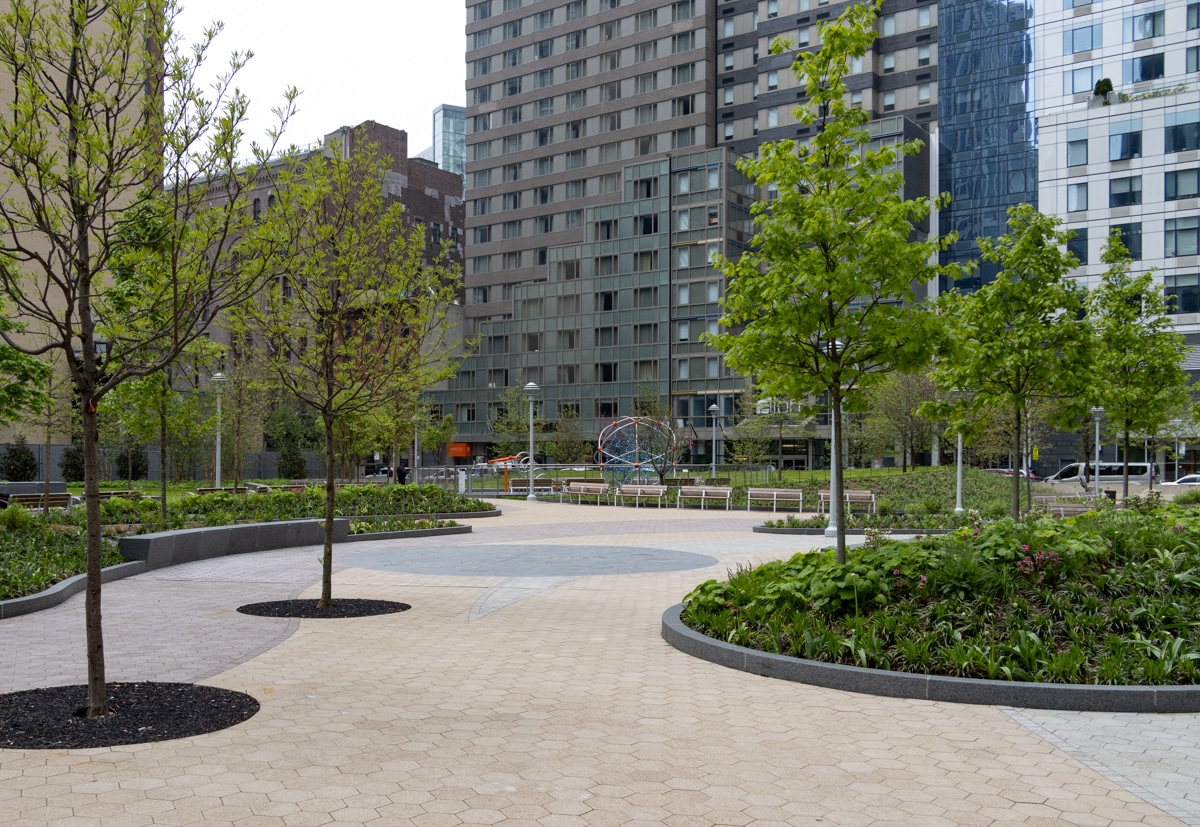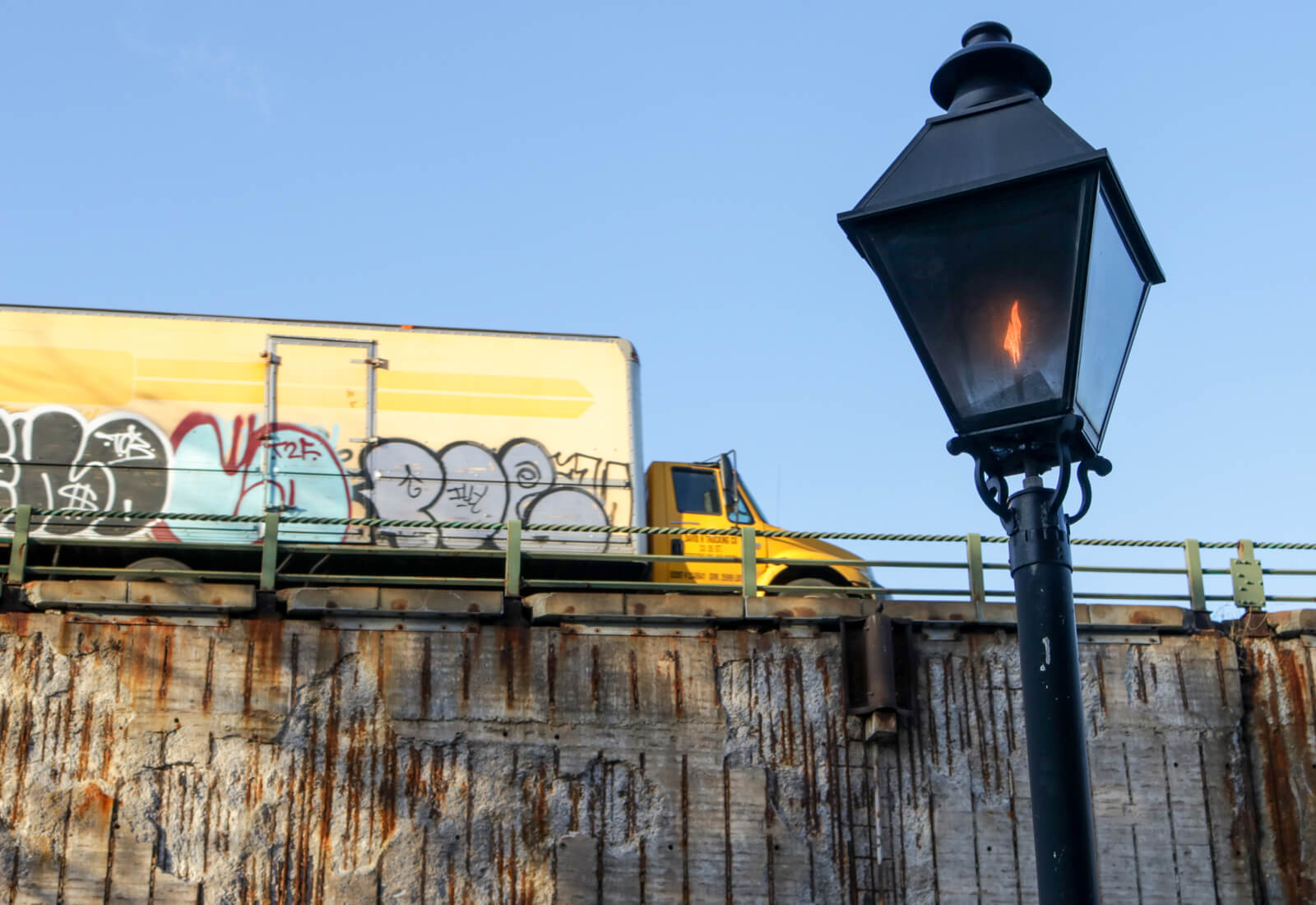Past and Present: Brooklyn Bridge Approach
A Look at Brooklyn, then and now. Public transportation across the Brooklyn Bridge was one of the major reasons for the bridge’s existence. The bridge opened to pedestrian and vehicular traffic in 1883. The first trolley service rolled along the tracks from the Sand Street Terminal in 1898. The tracks ran on the outermost sides…

A Look at Brooklyn, then and now.
Public transportation across the Brooklyn Bridge was one of the major reasons for the bridge’s existence. The bridge opened to pedestrian and vehicular traffic in 1883. The first trolley service rolled along the tracks from the Sand Street Terminal in 1898. The tracks ran on the outermost sides of the bridge, on the same roadway as the horse-drawn vehicles. Above, the elevated railroad lines ran across the bridge to Park Row, in Manhattan, operated by the Brooklyn Elevated Railroad Company. They began in 1883, the year the bridge opened, and were cable cars. The system was electrified in 1896, but the cable method was often used to cross the bridge itself. The photo on the left was taken in 1903, and what strikes me more than the sight of all those tracks, is the multitude of advertising bombarding the public. (I highly recommend going to the Shorpy site and viewing the photo full sized. You can pick out workers on scaffolds, and read every single ad with amazing clarity and detail). Now, as seen on the right, we only have the pedestrian lanes and the lanes for the thousands of cars and vehicles that cross every day. Thank goodness those ads are gone. The past was not always better.
(Photo: Shorpy.com)
(Photo: Google Maps)









Andrew:
– Electric cars do nothing at all about the congestion and safety problems inherent in widespread use of cars in dense cities.
– Where do you think the electricity comes from?
Thinking about comments above, about pollution in poorer neighborhoods of the Bronx, the brown line on the horizon, the sound of the city—which is really the sound of traffic—I am struck by the thought that, if we really could greatly lessen our dependence on oil, and have millions more electric cars, and by extension trucks and transport in general, so many f our problems would be solved.
The city—all cities—would be quieter. There’d be less pollution. And less greenhouse gases, hence less threat of climate change and rising seas. Less asthma and similar illnesses, particularly in poorer neighborhoods. The change in the world, or at least in America, would be profound.
There has been tremendous change in pollution just in the last half century. Go look at the photos of NYC in the 1940s, when coal smoke made the office buildings black, when the view disappeared into haze and smoke, and the city truly was much dirtier than it is now.
No – Arnett. Lots and lots of folks are fighting for better public transit options. BUT, guess what, they are defeated by folks with cars!
Dedicated streets and lanes for Rapid Bus Transit — defeated by folks that “need” to drive there. Why?!
It’s all political.
This conversation began with the idea of diversifying the modes of transportation over the Brooklyn Bridge. No one above said cars wouldn’t be allowed over the bridge — BUT the status quo of giving cars and their drivers everything they ask for is coming to an end. It should have ended long ago, but the post-war transition to a car-culture was pretty complete (and the long term damage is hard to undo!)
Thanks. LC- that’s what I was trying to say and not doing it well 🙂
“The vast majority of car commuters have good transit options; they just don’t like using them.”
This is not true. If you were to lay out a map, there are swaths of Brooklyn, Queens, the Bronx and Staten Island that either have no subway service or extremely limited service. Bus service is better, but it runs less frequently and has been cut significantly in relation to subway service.
Its even worse if you are commuting within the boroughs. Getting from the eastern part of Brooklyn to the Western part is relatively simple if you live near a subway line. But try commuting from Lewis Avenue and Jefferson Avenue in Bed Stuy to the waterfront on Columbia Street, or from Methodist Hospital to Brookdale Hospital by public transportation. Its just not doable.
“We are advocating shifting our resources away from modes of transit that are relatively inefficient and have high externalities to ones that are more efficient and create improved environmental conditions for everyone.”
If this were the case, then build more public transportation. But what you are advocating is stopping people from using available transportation options with the thought that at some point in the future additional options will be built to accomodate them. That’s just ass-backwards. Especially if you are the one who’s being “shifted”.
tybur6- I completely agree with you on that. I’m just not thinking that charging tolls on the bridges into Manhattan is the way to do it- it punishes everyone who drives, including those for whom it is a necessity. Why not a graduated car ownership tax- less for NYC residents of the boroughs except Manhattan, and road tax for those who drive in from outside the city? And taking that money to improve public transportation.
bxgrl — you’re pointing at EXACTLY the reasons why investment and budgets have to be shifted to support public transportation and other non-single occupancy vehicle transportation options!!! Away from the car-centric status quo.
The status quo does not function well and does not serve the needs of the society as a whole. It serves the needs of the car owners.
I think its an assumption to claim the vast majority of car users have good transit options. And let’s not forget all the out-of-towners who drive into NYC also. If you live in the Bronx, Bklyn, Queens or St. Is., your public transportation options are not all that great. From where I am in Crown Heights it can take me and hour and a half to get up to Mt. Sinai to see my doctor on the train. And 3 changes to boot. What about all the suburbanites driving in? The traffic on the LIE tells the story. Add a commuter surcharge to them.
How is it unfair to put a bigger burden on those who use the most public resources? The vast majority of car commuters have good transit options; they just don’t like using them. And it’s a myth that car commuters are less well off than transit commuters; the opposite is true.
You have to ration a scarce resource somehow: either by charging in money or by charging in time. Right now we’re charging in time, which means that those most willing to wait in traffic are driving, but that has enormous cost burdens on those who have no choice but to drive — for example, deliveries, emergency vehicles — and also huge externalities on non-drivers by slowing down mass transit (especially buses), putting huge amounts of traffic through dysfunctional streets (see Flatbush Ave during rush hour — you can’t cross the street because the crosswalks are full of cars).